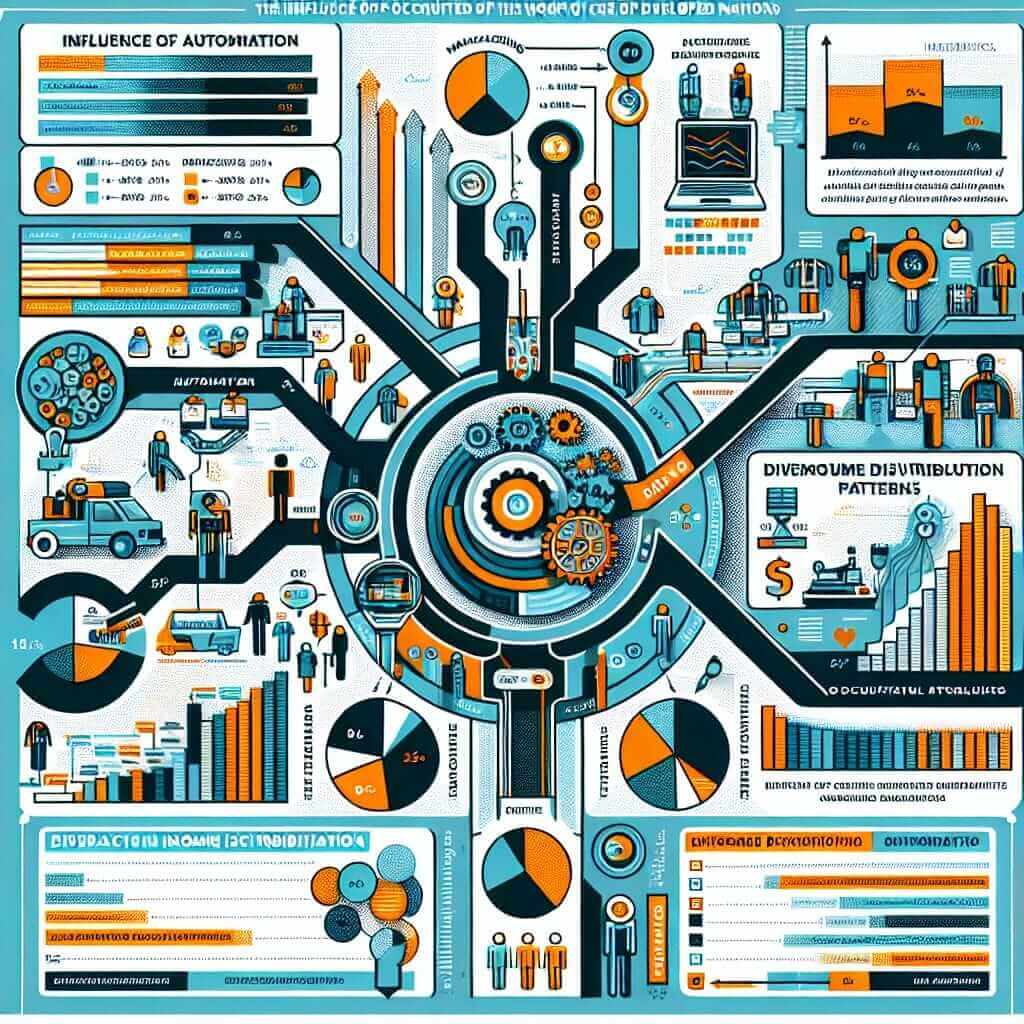The IELTS Reading section is designed to test a wide range of reading skills, such as reading for gist, reading for main ideas, reading for detail, skimming, understanding logical arguments, and recognizing writers’ opinions, attitudes, and purpose. As a topic of significant relevance, “How does automation affect income distribution in developed countries?” has become increasingly popular in IELTS reading passages.
Automation’s growing impact on income distribution is a hot topic, reflected in recent studies and frequent discussions. Its frequency in past IELTS exams suggests that it could appear in future iterations. Being well-prepared for such topics, hence, is crucial. This article aims to provide a comprehensive reading test to help you prepare effectively.
Full IELTS Reading Passage
Automation and Income Distribution in Developed Countries
Automation, characterized by the integration of technological advancements such as artificial intelligence and robotics into various industries, has significantly influenced income distribution in developed nations. Historically, technological advancements have always sparked debates on their societal impacts, particularly concerning job losses and income inequality.
In the early stages of automation, it was predominantly manufacturing jobs that were affected. Machines replaced human labor, leading to significant job losses among lower-income workers. However, as technology advanced, automation began to encroach on more sectors, including services and even creative fields. This shift has caused substantial economic upheaval, altering the landscape of income distribution.
One of the primary concerns regarding automation is its propensity to exacerbate income inequality. High-skill, high-income jobs are often less susceptible to automation, while low-skill, low-income positions are more vulnerable. As a result, the income gap widens as those in highly skilled positions continue to thrive, while those in automated roles face unemployment or lower wages.
Governments and organizations have been resorting to policies aimed at mitigating the adverse effects of automation. Education and training programs are being heavily funded to reskill the workforce for new, technology-driven roles. Additionally, there are discussions around implementing universal basic income (UBI) as a safety net for those displaced by automation.
However, not all effects of automation on income distribution are negative. Increased productivity and lower production costs can lead to lower prices for goods and services, potentially benefiting consumers. Moreover, automation can free workers from mundane tasks, allowing them to engage in more innovative and fulfilling work.
Nevertheless, the net effect of automation on income distribution remains a topic of ongoing research and debate. As automation continues to evolve, so will its economic and social ramifications, necessitating continuous adaptation in policy and individual strategies.
Sample Questions
Multiple Choice
-
What has been the historical trend in the impact of technological advancements?
- A. Job creation across all sectors
- B. Wage equality among different job types
- C. Job losses particularly in manufacturing
- D. Less economic upheaval
-
What is one of the primary concerns about automation?
- A. It creates more highly skilled jobs.
- B. It only affects the manufacturing sector.
- C. It exacerbates income inequality.
- D. It decreases productivity.
True/False/Not Given
-
Automation has only affected the manufacturing sector.
- A. True
- B. False
- C. Not Given
-
Universal basic income (UBI) has already been implemented worldwide as a response to automation.
- A. True
- B. False
- C. Not Given
Matching Information
- Match the following statements with the correct paragraph (A, B, C, etc.):
- i. Innovations allow workers to engage in more fulfilling tasks. (Paragraph: _ )
- ii. Governments are investing in reskilling programs. (Paragraph: _ )
Summary Completion
Complete the summary below.
- Automation affects income distribution by making high-skill jobs more secure and increasing the risk of unemployment among 1. Governments are addressing these issues through 2 and considering UBI to support displaced workers.
Short-answer Questions
- What sectors have seen the increased adoption of automation?
- How might lower production costs benefit consumers?
Answers
- C – Job losses particularly in manufacturing
- C – It exacerbates income inequality
- B – False
- B – False
-
- i. E
- ii. D
-
-
- low-skill workers
-
- education and training programs
-
- Manufacturing, services, and creative fields
- By reducing prices for goods and services
Common Mistakes
- Misinterpreting Key Details: Pay close attention to specific industries or roles mentioned.
- Generalizations: Avoid assumptions that all effects are either entirely positive or negative.
- Overlooking Contextual Clues: Look for hints in the passage that indicate broader implications.
Vocabulary
- Automation (n): /ɔːtəˈmeɪʃən/ – The use of machinery and technology to perform tasks without human intervention.
- Reskill (v): /ˌriːˈskɪl/ – To learn new skills for a different job.
- Universal Basic Income (n): /juːˈnɪvərsəl ˈbeɪsɪk ˈɪn.kʌm/ – A government program in which every adult citizen receives a set amount of money regularly.
Grammar Point: Conditional Sentences
- Type Zero: If + present simple, present simple (e.g., If you heat water to 100 degrees, it boils.)
- Future Conditional: If + present simple, will + base verb (e.g., If workers reskill, they will find new opportunities.)
Advice for High IELTS Reading Scores
- Practice Regularly: Engage with diverse reading materials on varied subjects.
- Enhance Vocabulary: A rich vocabulary enables better comprehension and quicker responses.
- Take Mock Tests: Familiarize yourself with the exam format and time constraints.

By following these guidelines and practicing diligently, you’ll be well on your way to a higher score in the IELTS Reading section. Happy studying!